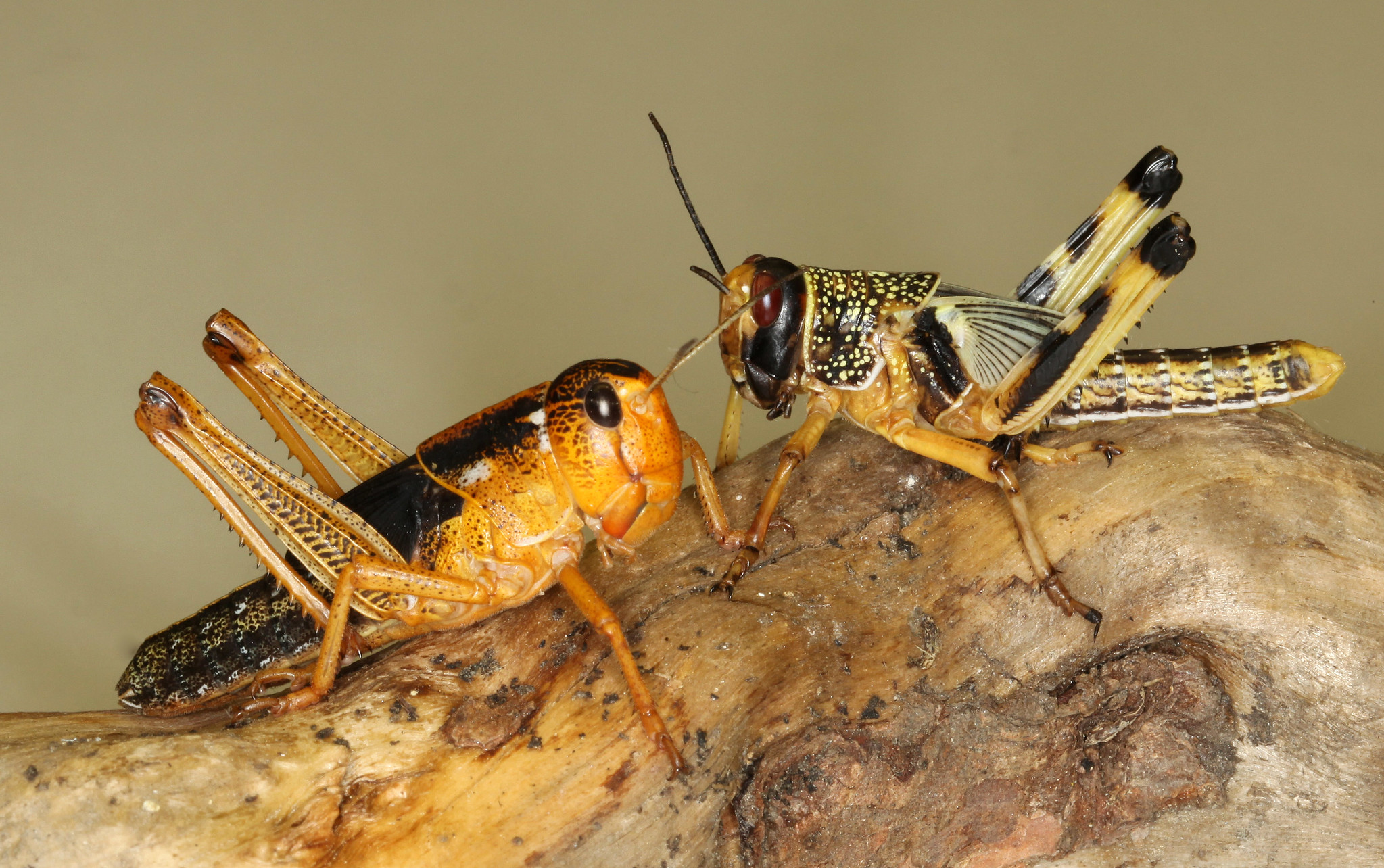Not only can they sniff out cancer in seconds, locusts are also able to distinguish between different types of cancer, the study says.

Locusts are swarming grasshoppers that attack crops. (Creative Commons)
Scientists from Michigan State University have now given a new identity to locusts, the swarming grasshoppers that wreak havoc almost every year in several states of India — including Andhra Pradesh and Tamil Nadu — and are cursed by crop farmers.
A study, which is yet to be peer-reviewed but was published in biorxiv.org, claimed to have found that locusts have the capability of differentiating between healthy human cells and cancerous cells using their sense of smell.
Oncologists are excited about the new research, and said it could be a game-changer in the early detection of cancer. However, they said larger studies are needed; and, of course, a device that can use this ability of locusts, which might not be easy.
“This is novel research. Locusts are known as the ‘swarming phase’ of short-horned, solitary grasshoppers. Now, the researchers have unveiled this unique trait in them. This gives them a new identity as super-sniffers,” said Dr US Vishal Rao, the dean of Head and Neck Oncology at HCG Cancer Care in Bengaluru.
The researchers from MSU attached electrodes to locust brains. They then recorded the insects’ responses to gas samples produced by healthy cells and cancer cells. They used those signals to create chemical profiles of the different cells.
Explaining the research, Rao — who is not part of the study — told South First: “Cancer cells create different chemical compounds, which could potentially be detected in exhaled breath. This uncanny knack of locusts, scientists believe, could help in the early detection of cancer and save precious lives, given that patients have an 80-90 percent chance of survival if cancer is detected in the first stage.”
The researchers explained in the study that they found that no gas-sensing technology was currently being used in any clinical setting for cancer detection.
The ones in use are mostly for the identification of gas mixtures, called Gas Chromatography-Mass Spectrometry (GC-MS), which do component-wise identification of gas mixtures.
However, this technology is said to be slow and not portable. It also requires pre-processing and storage of samples.
“Moreover, this component-wise classification approach is fundamentally different from biological olfactory gas sensing and poses challenges regarding diagnostic capabilities due to internal variations of breath samples and environmental factors,” the researchers explained in the study.
Though there are few engineered chemical sensors which can detect cancers, biology, the scientists believe, is the best way to go in this regard. Take, for instance, dogs. They are super-sniffers who can detect tell-tale smells of drugs and explosives. And, recently, canines were used to detect low blood sugar and Covid-19 too.
Taking this concept forward, the researchers realised that insects also have an extremely sensitive sense of smell.
They argue that these insects are easy to maintain and and can be trained behaviorally to detect specific volatiles.
Oncologists agreed that it is already known how olfaction works in locusts, and even the insect’s neural circuit is known.
They could even engage honeybees for future studies as they also have impressive sensory abilities.
With knowledge of the insect’s brain already available, the researchers connected an electrode antenna to the locust. They then ran their neuronal activity through a computer and created chemical profiles of healthy and cancer cells.
This combination of insect and machine detector was then given cells from three different types of oral cancers. The researchers then measured the brain activity of the insect when they were smelling it.
The analysis showed that the locusts could not only smell, but also distinguish cancer cells from healthy cells. Interestingly, they also distinguished three different cancers presented to them.
This study shows that not just the patient’s cancer but also the type of cancer can be identified by a locust’s brain. Moreover, the researchers found that the speed at which the insect could differentiate all this was higher than machine detectors.
However, oncologists from India said that this kind of detection could not be possible soon in a clinical set up.
“This pioneering work could pave the way for developing devices employing insect sensory neurons to enable early cancer detection using the patient’s breath,” Dr Rao noted.
However, Dr Narayana Subramaniam, consultant & HOD, Head & Neck oncology SSCHRC in Bengaluru, added that the “use of volatile organic compounds to detect cancer shows promise and has a scientific foundation, leading to several groups working on early cancer diagnosis through devices that can detect them.”
He explained that the evidence we now have shows that they have the potential to detect cancer early, but are not yet accurate. This is likely because cancer is heterogenous — tumours of the same type and stage are made up of millions of cells that may exhibit dissimilar behaviour.
Only through validation by large studies will we know if they are effective for cancer screening in the population. Until then, conventional cancer screening tests will play a vital role in early diagnosis, effective treatment and cure.

Apr 20, 2024

Apr 20, 2024

Apr 05, 2024

Apr 05, 2024

Mar 29, 2024

Mar 29, 2024